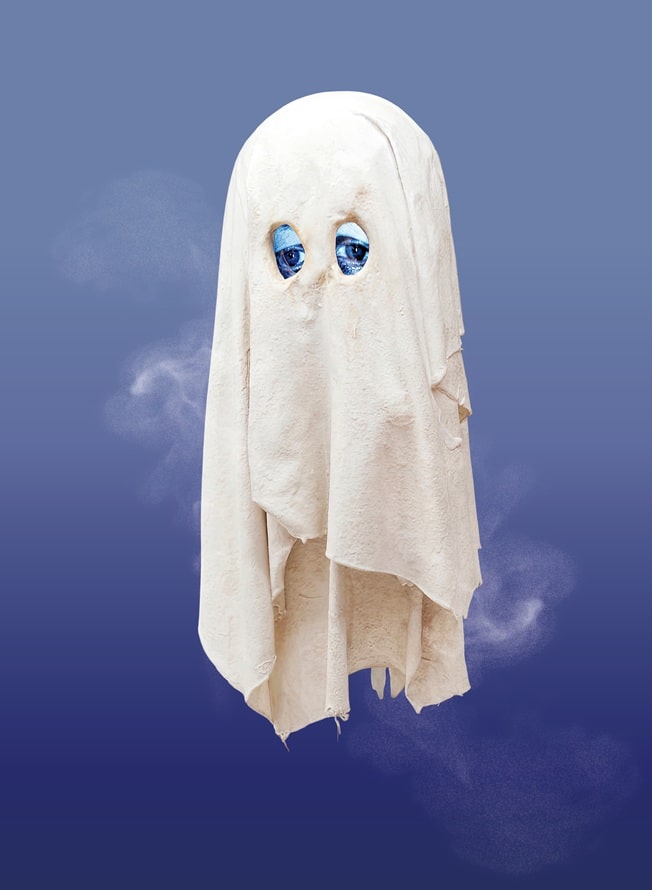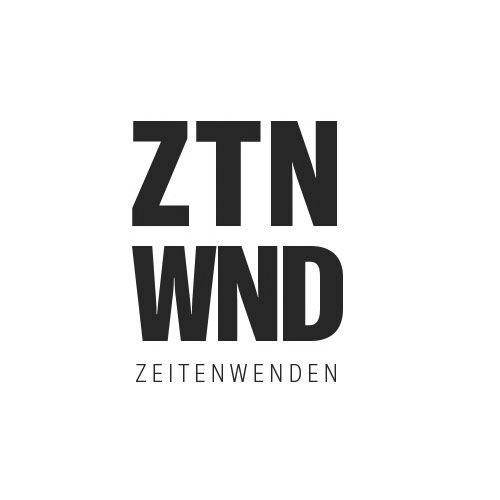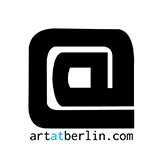Kunstmuseum Basel is currently showing the exhibition “Ghosts. Visualizing the Supernatural”. Ghosts seem to be everywhere. Visual culture teems with specters, from Hollywood blockbusters like Ghostbusters (1984) to indie films such as All of Us Strangers (2023). They haunt screens, theater stages, and pages: literature, folklore, and myth are saturated with spirits that refuse to leave us in peace.
Image above: Tony Oursler, Fantasmino, 2017, Acrylic resin on canvas and digital hardware with moving image, 46.99 x 21.59 x 17.78 cm, Collection of Tony Oursler.
They have also always haunted art. As entities of the in-between, ghosts are mediators between worlds, between above and below, life and death, horror and humor, good and evil, visible and invisible. Any attempt to depict, record, or communicate with them thus offers a conceptual challenge and an emotional thrill.
This fall and winter, the Kunstmuseum Basel dedicates an extensive exhibition to these unfathomable entities. With over 160 works and objects created during the past 250 years, Ghosts. Visualizing the Supernatural explores the rich visual culture associated with ghosts that took shape in the Western hemisphere in the nineteenth century—when science, spiritualism, and popular media began to intersect in new ways, inspiring art and artists ever since.

The 19th century is generally regarded today as a golden age of rationality, science, and technology, but it was also a heyday for belief in ghosts and apparitions. In the second half of the century, ghosts became a means of exploring the psyche and opening new avenues to the human psyche. Romanticism had awakened a fascination with spectacle and wonder, so belief in ghosts was further fueled by technological innovations and illusion techniques, such as the theatrical Pepper’s Ghost.
The invention of photography around 1830 led to the rise of ghost photography, with important figures such as William H. Mumler in the United States and later William Hope in England. Their photographs, which made loved ones reappear and seemed to promise an afterlife, have had a significant influence on how we still imagine ghosts today. The Munich “Ghost Baron” Albert Freiherr von Schrenck-Notzing – arguably the most famous parapsychologist – combined the novel technical means of photography with a quasi-scientific approach: He wanted to document the supernatural phenomena that occurred in his séances (which were reported on by none other than the writer Thomas Mann).
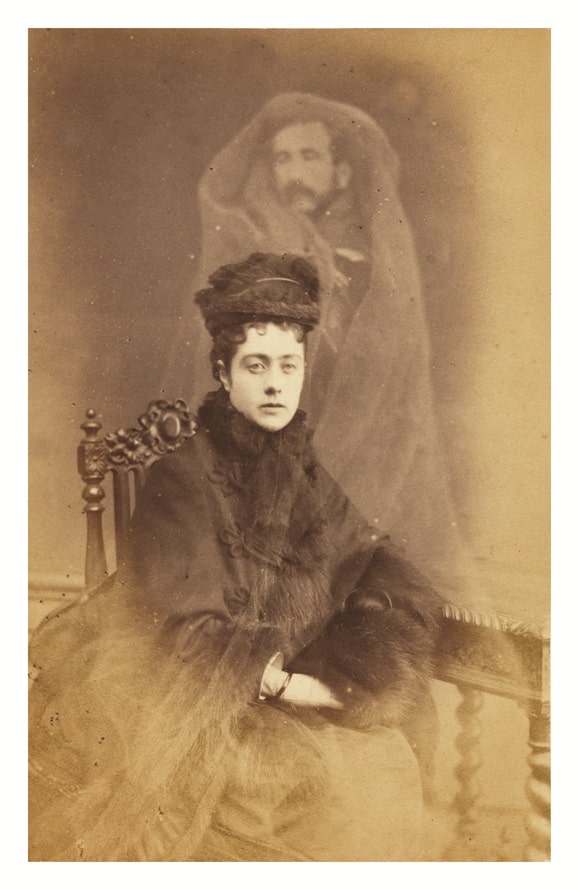
Ghost photography is therefore an important chapter of the exhibition. Another avenue of exploration is offered by the records and images created by spiritualist mediums to document their direct contact with the spirit world. Given the close connection between spirits and exceptional psychological states, the exhibition also delves deeply into the phenomenon of hauntings—the presence of spirits in spaces. It traces the diverse visual elements and ghost stories found in 19th-century Western culture, which were later taken up by artists. In doing so, it curiously incorporates visual worlds beyond the realm of fine art, which became particular sources of inspiration for 20th-century art.
The exhibition “Ghosts: On the Trail of the Supernatural” and the accompanying magazine-style publication were developed in close collaboration with Andreas Fischer and Susan Owens. Fischer works at the Freiburg IGPP (Institute for Frontier Areas of Psychology and Mental Health) and is considered one of the leading experts in the field of ghost photography and materialization phenomena. British art historian Susan Owens wrote the book “The Ghost: A Cultural History” in 2017, in which she aptly described ghosts as “shadows of humanity.” The project explores this human element, thereby excluding angels, nature spirits, demons, and the like. Instead, it focuses on the poetic potential of the subject, its power to inspire, and the function of ghosts as metaphors that enable critical responses to the contemporary world and bring repressed material to the surface.
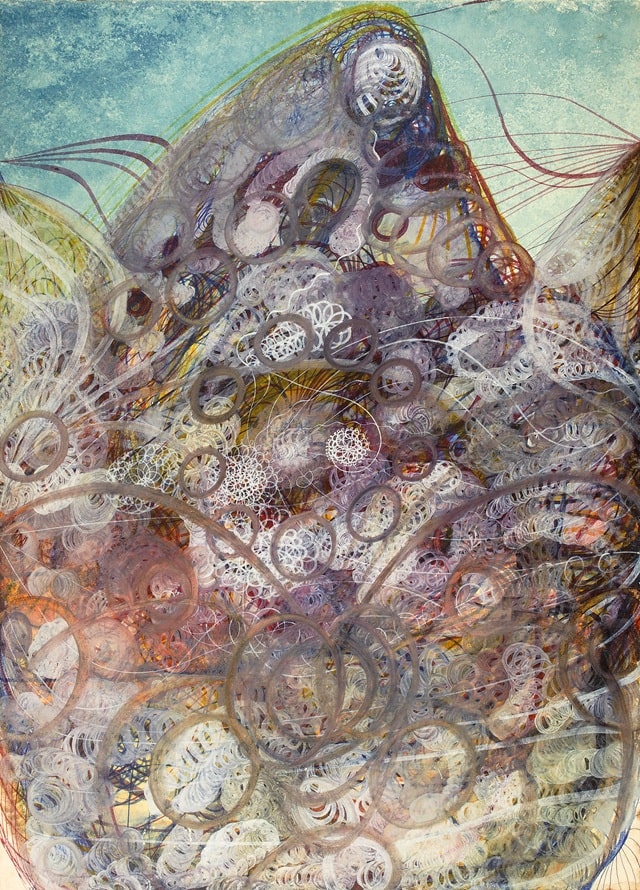
The fact that the phenomena in question constantly interact with our collective imagination, indeed even with our cultural unconscious, makes ghosts and specters such enduringly powerful beings – and the exhibition a surprising, stimulating, and impressive experience. The scenography, designed to open the senses to atmospheric shifts and boundary experiences, was conceived by Alicja Jelen and Clemens Müller of please don’t touch (Dortmund).
The Publication
The accompanying magazine features texts by external authors, including Andreas Fischer and Susan Owens. Other contributions come from the British Assyriologist Irving Finkel, author of The First Ghosts: Most Ancient of Legacies(2019); the American poet Emily Dickinson; the German writer Thomas Mann, with his vivid description of a séance; the contemporary Swiss author Ariane Koch, whose “Ghost Song” emerged from a ghostwriting session; statements from participating artists such as Corinne May Botz, Claudia Casarino, Adam Fuss, Tony Oursler, and Cornelia Parker; and from Instagram star Timur, who contributes a fact check on ghosts. The illustrations are by the duo War and Peas, Elizabeth Pich and Jonathan Kunz, who have long demonstrated an interest in all things ghost-related in their webcomics.Herausgegeben von Eva Reifert. Erschienen im Christoph Merian Verlag, 2025.
Curator: Eva Reifert
WHEN?
Exhibition dates: Saturday, 20. September 2025 until Sunday, 8. March 2026
Opening hours:
Tu, Th–Su: 10 am – 6 pm
Wed: 10 am–8 pm
Mo closed
WHERE?
Kunstmuseum Basel, Neubau
St. Alban-Graben 20
4052 Basel
COST?
Adults (20+): CHF 30
Students (20-25): CHF 20
Young people (13-19): CHF 12
Disability benefit recipients: CHF 20
Groups (20 or more people): CHF 24


